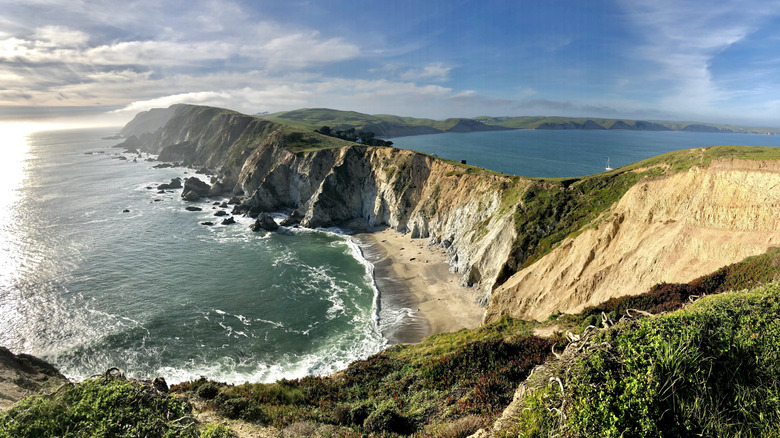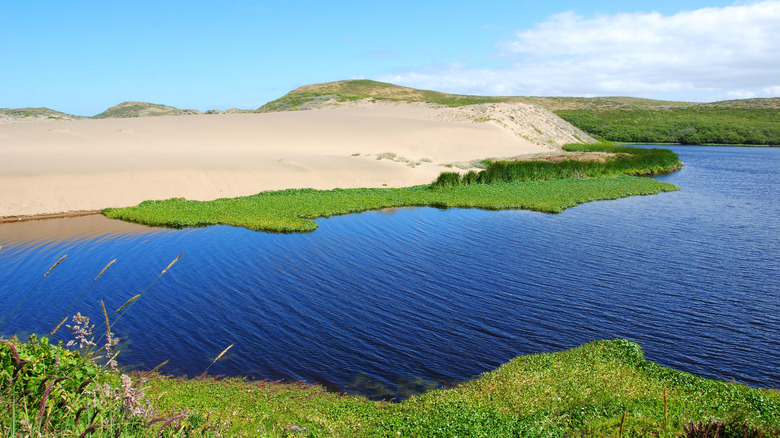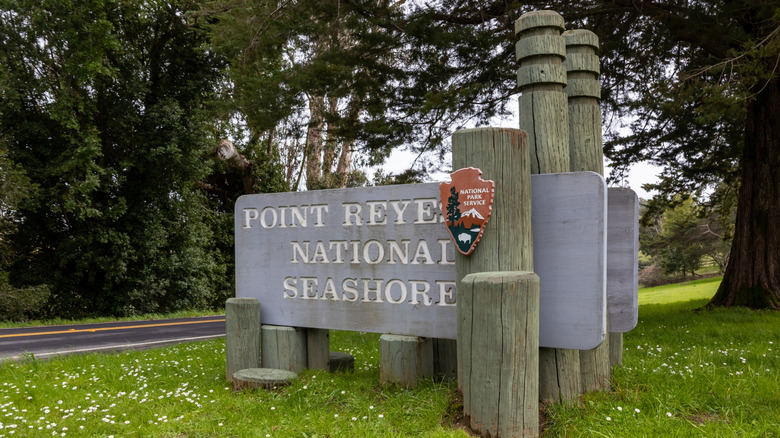When it comes to exploring coastline, driving California’s striking coastal road trip filled with beaches and cities along famed Highway 1 will not disappoint. Stretching 656 miles from north to south, the northern stretch includes well-known hotspots such as Carmel and Monterey and classic cities such as San Francisco. If you’re looking for a secret, less-crowded stretch of coast featuring beaches and lagoons, look no further than the Point Reyes National Seashore.
The Point Reyes National Seashore is located about 30 miles north of San Francisco on Highway 1, part of a triangular-shaped peninsula, featuring 80 miles of coastland across its 71,000 acre area. The vision for the protected U.S. National Park Service managed land began in 1962, and it was officially established in October 1972, with 25, 000 acres designated as wilderness in 1976. The peninsula is bordered on its northeast end by Tomales Bay, the serene bay known for beautiful beaches and oysters, the Bolinas Lagoon on its southeastern side, along with the Pacific Ocean to the west. It’s a year-round destination where summer days rarely get above 65 degrees, making for a great respite from hotter destinations in the Golden State. If you don’t mind some rain and chilly temperatures, visit from December through March. Known for ever changing conditions, plan for the unexpected, including rain gear, ample water and know that some places in the park lack amenities such as restrooms and cell service.
More than 2.3 million visitors in 2024 were drawn to the seashore’s utopian-like setting, which features a dozen sites of historical significance, more than 20 beaches, and 140 miles of hiking trails. Visitors can access Point Reyes National Seashore for free from 6 a.m. to midnight daily, and watching for seasonal closures and holiday schedules on the park’s website.
Explore the historic lighthouse, beaches and lagoons at Point Reyes National Seashore
There are three Visitor Centers within Point Reyes: The Bear Valley Visitor Center, serving as the main hub, the Point Reyes Lighthouse Visitor Center, which includes the stairs to the lighthouse, and the Kenneth Patrick Visitor Center, located at Drakes Beach. Each has varying hours, so best to consult the park’s website for information. The historic Point Reyes Lighthouse, was built in 1870 and served as an active lighthouse until 1975 and visitors should take 90 minute round trip drive on a windy road to the lighthouse with limited parking. If you’re up for the challenge, 313 stairs await down (and back) to the lighthouse itself, or you can take in the view from the Observation Deck.
The park’s array of beaches includes those accessible by car and those so secluded, hiking in is the only access. You can drive to the largest, Point Reyes Beach, stretching 11 miles from Tomales Point to the southern headlands and Drake’s Beach, with its adjacent visitor center, to view its cliff-lined shores, which is closed during elephant seal pupping season. For hike in access on the northern end, visit McClures Beach, popular for tidepools during low tide and wildflower bloom during spring months. From here, you won’t be far from the Tomales Point Trailhead, where you’re almost guaranteed an elk sighting as it heads 9.5 miles north to an elk reserve. To the south are dog-friendly Kehoe Beach and Abbotts Lagoon Beach, for a lagoon/beach combination where you can take a 1.5 mile hike over a bridge from the lagoon to the beach. It’s a great spot for bird watching, and home to the endangered western snowy plover. The park’s website details beach access to aid in planning your adventure.




